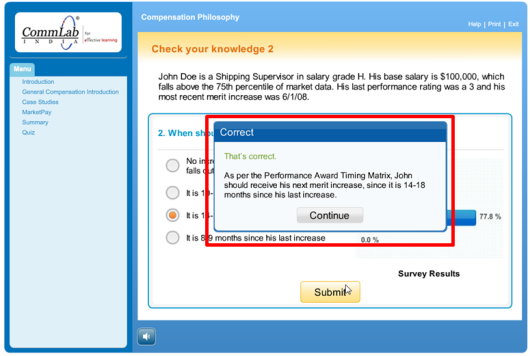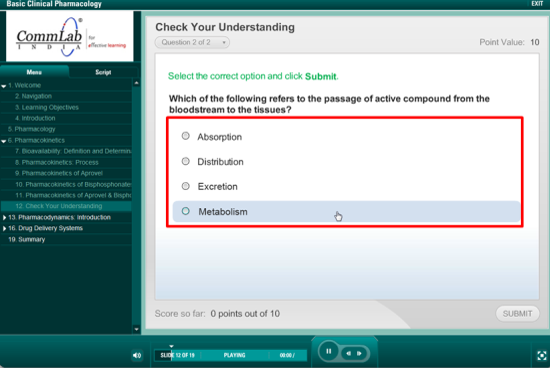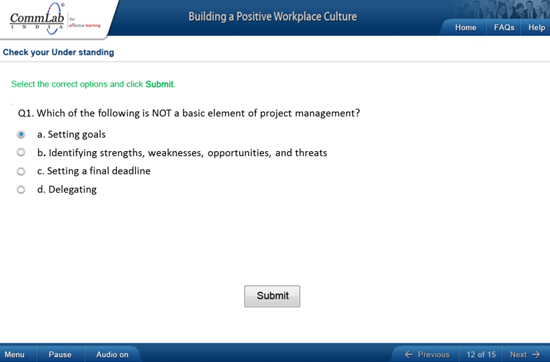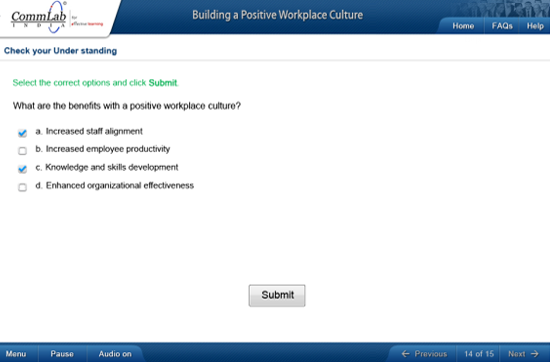5 Variations of Multiple Choice Questions for Your Elearning Course

Multiple Choice Questions (MCQs) are used in an eLearning course to assess the achievement of the learning outcome. The purpose of assessments is to evaluate the learner and also to reinforce the learning. MCQs are used to test recall of factual information. However, they can also be used to test higher order thinking involving application and evaluation. As an Instructional Designer (ID), always improve the quality of the multiple choice questions by doing these:
- Align the questions to the learning outcome set for the module
- Understand the skills required for the outcomes
- Choose the right assesment type for the skills
- Write the correct alternatives for assesment questions
Assesment questions should be reliable and valid. Validity refers to the extent to which the assessment measures the purpose of the content. Reliability is the degree to which the question consistently measures a learning outcome. The reliability is enhanced when the number of MCQs focused on a single learning objective is increased.
There are 5 varieties of MCQs that can be used in eLearning. Let’s see each of them with an example.
1. MCQs with Single Correct Answer
In this type of MCQs, only one alternative is the correct answer and the remaining alternatives are incorrect.

2. MCQs with the Most Suitable Answer
In this type of MCQs, the alternatives differ in the degree of correctness. The most suitable alternative is the correct answer and the other alternatives serve as distractors.

3. MCQs with Negative Phrasing
In this type of MCQs, the learner has to either identify the incorrect answer or the alternative which is irrelevant to the question stem.

4. MCQs with Multiple Responses
In this type of MCQs, the learner has to select more than one correct answer.

5. MCQs with Combined Responses
In this type of MCQs, one or more alternatives are correct answers and the remaining serve as distractors. The learner has to identify the correct answer from the set of options which has combinations of alternatives. Studies suggest that items of the combined-response variety have low reliability, so it is better to rewrite it as multiple true/false.

(Source: Albanese, 1990; Haladyna& Downing, 1989b)
These are the 5 varieties of MCQs we generally use in our eLearning course. Hope you find this blog informative. Do share your views.



![5 Best Instructional Methods for Blended Learning [Infographic]](https://blog.commlabindia.com/hubfs/Imported_Blog_Media/blended-learning-2-1.jpg)
![All You Wanted to Know About Blended Learning [Infographics]](https://blog.commlabindia.com/hubfs/Imported_Blog_Media/ways-to-blend-technology-with-classroom-training.jpg)
